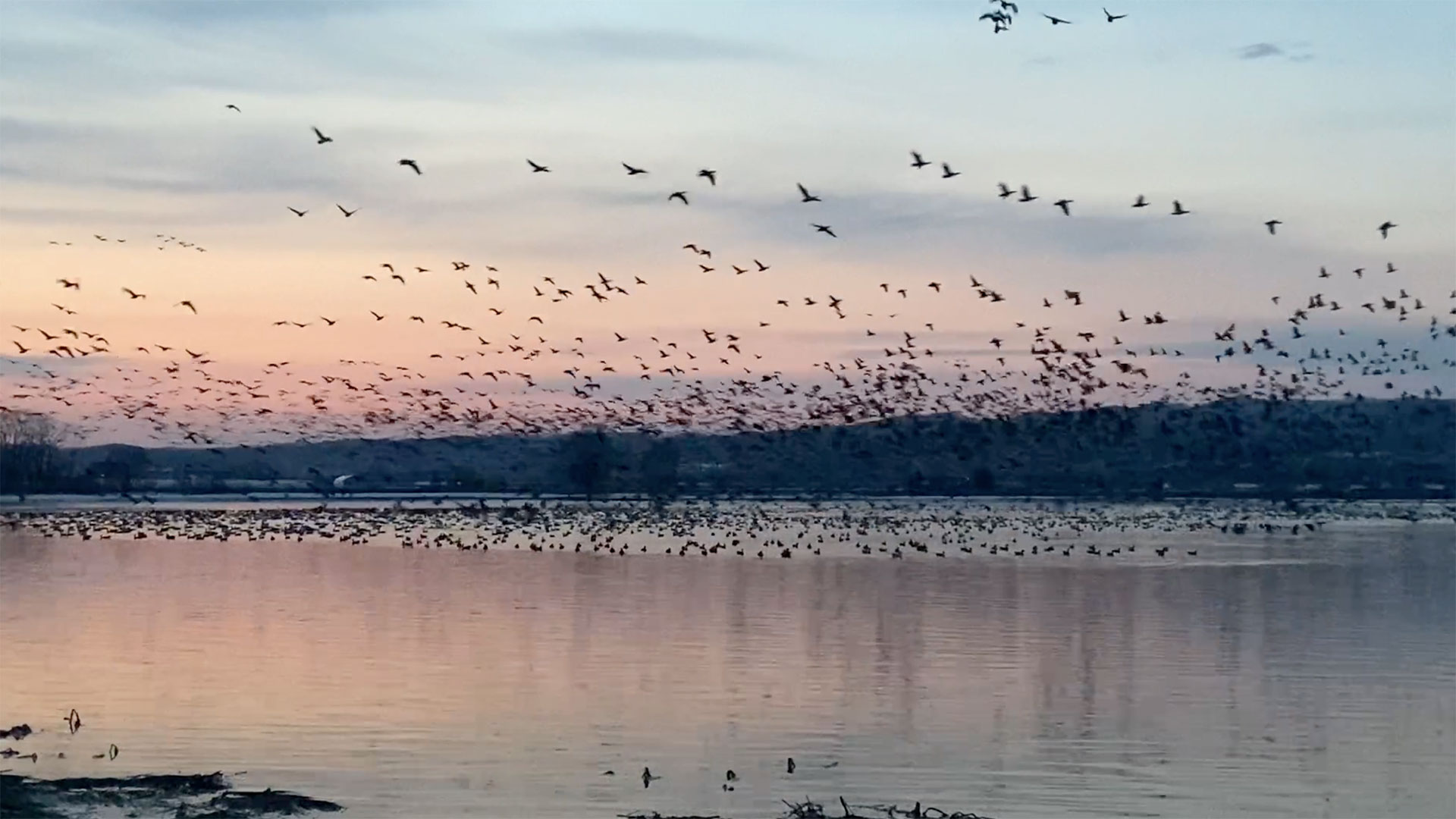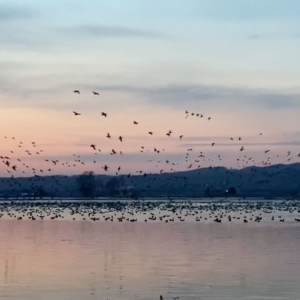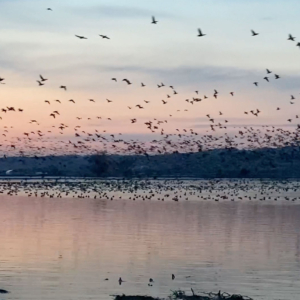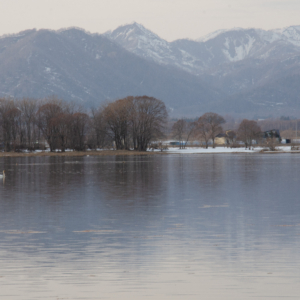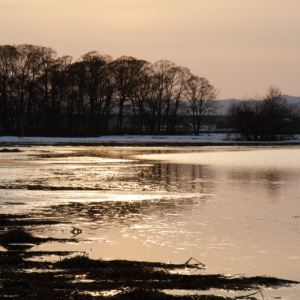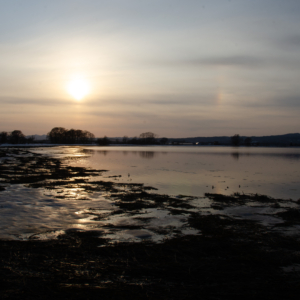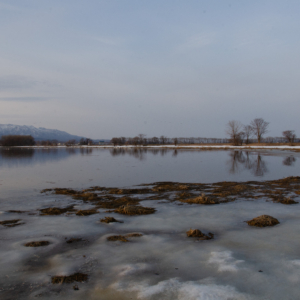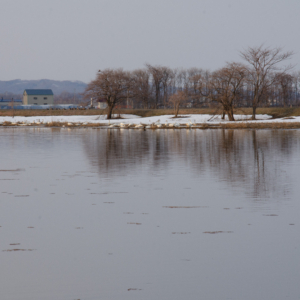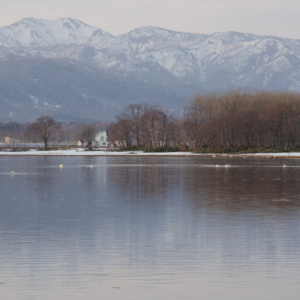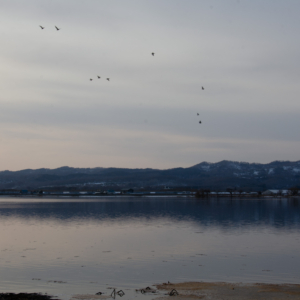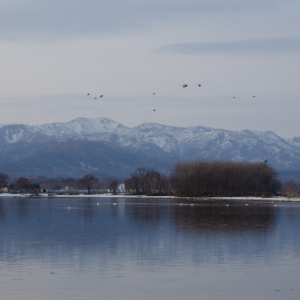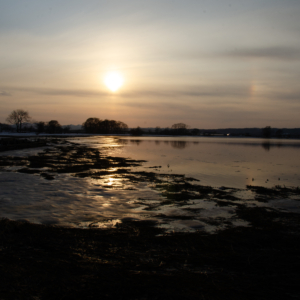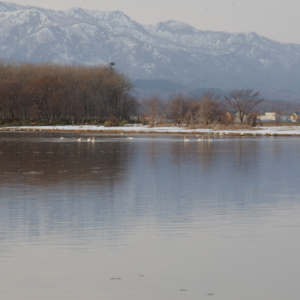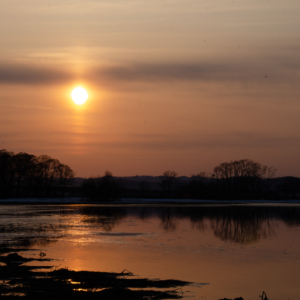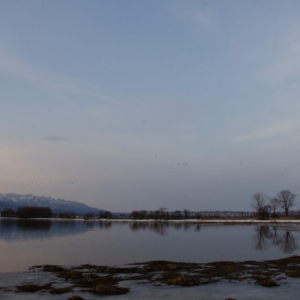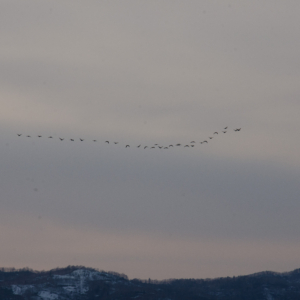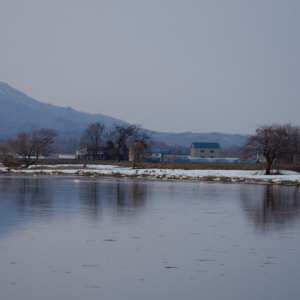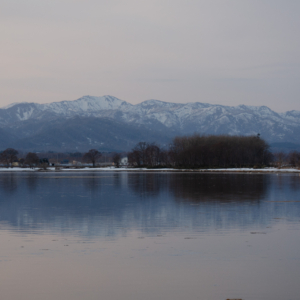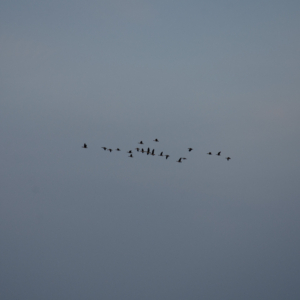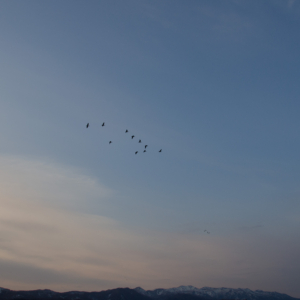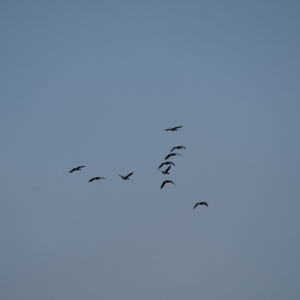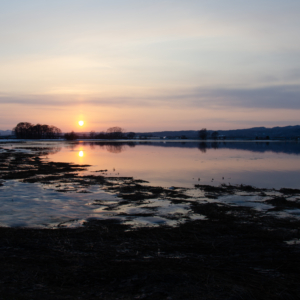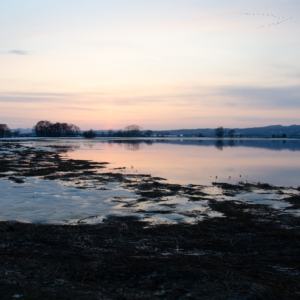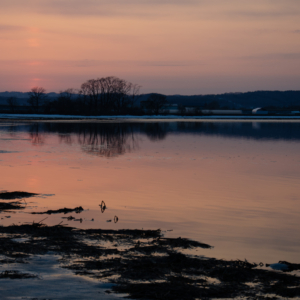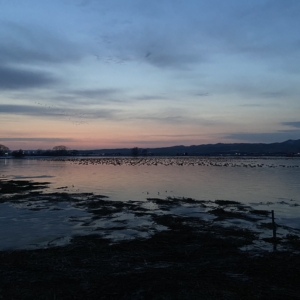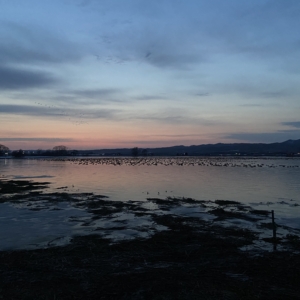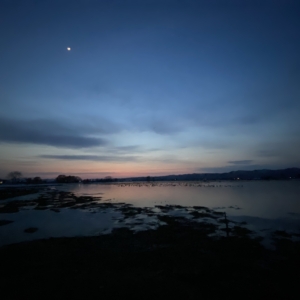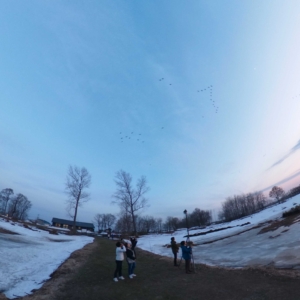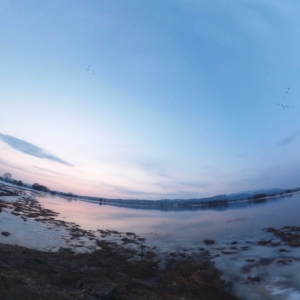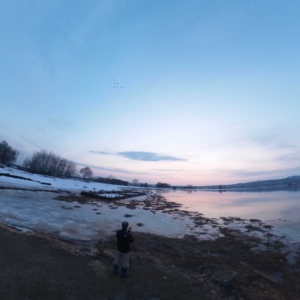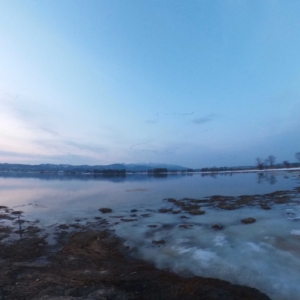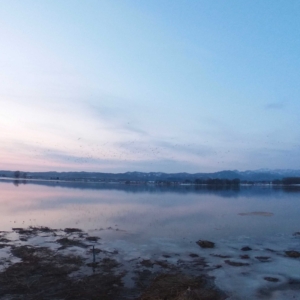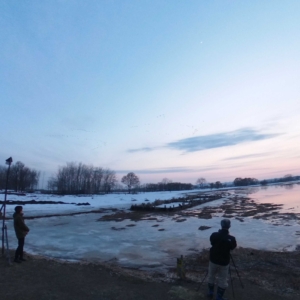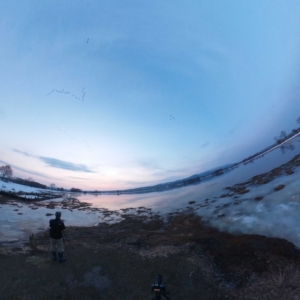This article was written on 12 April 2024.
As snow melts across various parts of Hokkaido, spring arrives all at once. The mountains still carry a light dusting of snow, while greenery spreads across the foothills.
During this time, Hokkaido may appear somewhat drowsy no matter where you go, but there are actually incredibly beautiful landscapes scattered throughout. Surprisingly, the number of visitors is relatively low, ensuring that travelers are never disappointed.
Let me introduce you to one of these beautiful places: Miyajima-numa. Located about an hour’s drive from Sapporo, it’s on the way to Asahikawa. Why not consider adding it as a stop on your journey?
The Greater White-fronted Geese have started visiting Miyajima-numa from Siberia. On this day, around 8,000 to 10,000 geese gathered.
Miyajima-numa is a region where precious nature is preserved, having been registered under the Ramsar Convention, and it is one of the top places in Japan for bird watching.
The Greater White-fronted Geese arrive at Miyajima-numa in the spring and autumn. The spring migration period is from mid to late April, and the autumn migration period is from late September to early October. Also, when observing the geese, the ‘timing’ is crucial!
Remember the following points to observe Greater White-fronted Geese.
- The departure of them is just before sunrise.
- Their return to the roosting site is around sunrise and sunset.
- During the day, if the weather is good, they mainly rest in the pond, especially in the morning.
These videos are showing how the birds land on the pond.
The Miyajima-numa Waterfowl and Wetland Center is calling on visitors to adhere to the following guidelines:
Pay attention to the observation location
Please observe and photograph the Greater White-fronted Geese from the ‘observation area’ near the Miyajima-numa Waterfowl and Wetland Center!
Please refrain from entering the reed beds! Approaching from areas outside the observation zone will startle the geese and cause them to flee. This not only causes stress to the geese but also inconveniences many visitors who come to enjoy observing them. Please refrain from doing so.
Please also refrain from entering farmland and farm roads! Farmland and farm roads are managed by local farmers. In addition to causing inconvenience to agricultural work, unauthorized parking can lead to damage to farm roads and ridges. Moreover, entering farmland may introduce pests and diseases. Please absolutely refrain from entering.
Regarding the use of drones (unmanned aerial vehicles) around Miyajima-numa The use of drones in nationally designated bird and animal protection areas is discouraged. Furthermore, recreational drone use for purposes such as filming the geese is also discouraged in the surrounding areas. For research purposes, please contact the Miyajima-numa Waterfowl and Wetland Center for further information.
To all those wishing to witness the early morning departure of the Greater White-fronted Geese
- Do not breach the gate.
- Do not venture into the reed beds.
- Do not shine lights onto the pond.
The early morning Greater White-fronted Geese are particularly sensitive to human presence. To reduce stress on the geese, access to the jetty (the area protruding into the pond within the observation area) is restricted in the early morning. Please observe from the area just before the gate of the jetty or from near the observation hut. Previously, people used to crowd onto the jetty even in the dark, startling the geese and causing them to take off prematurely or move away from the shore. With the installation of the gate, the geese now spread across the entire pond comfortably and take off at their natural pace.
Do not recommend observing the takeoff at Miyajima-numa for first-time visitors
For those visiting Miyajima-numa for the first time, it can be dark and difficult to find your way around, and some may accidentally stray onto farm roads, experience tire punctures, or even get their cars stuck in ditches.
If you are visiting for the first time, we suggest starting with observing the geese returning to the roost in the evening, which is safer and more manageable.
If you still plan to come, please make sure to thoroughly research beforehand. Also, after arriving at the parking lot, it’s advisable to wait in your car until it’s a bit brighter before heading to the observation area.”
About Miyajima-numa
Miyajima-numa is a small and shallow pond with an area of 25 hectares and an average depth of 55 centimeters. About 6 million years ago, the entire Ishikari River area, including Miyajima-numa, was at the bottom of the sea, but over a long period, wetlands were formed.
This created a paradise for wildlife. However, the surrounding wetlands were reclaimed during the Meiji era, making Miyajima-numa an important habitat for migratory birds and other wildlife. Particularly during the seasons from mid to late April and late September to early October, up to 60,000 to 70,000 Greater White-fronted Geese visit. It was registered under the Ramsar Convention in 2002.
At the Miyajima-numa Waterfowl and Wetland Center, appropriate protection and conservation of the surrounding environment and waterfowl are carried out at Miyajima-numa, which is registered under the Ramsar Convention. The center provides information about the nature throughout the seasons and offers ‘experiential programs (events)’ that allow interaction with nature and local agriculture.
Miyajima-numa Waterfowl and Wetland Center
Opening Hours Regular: 9:00 AM – 5:00 PM (During the peak season for Greater White-fronted Geese, opening hours are extended. Additionally, restrooms are available in the early morning.)
Closed Days Every Monday (open on Mondays if it’s a public holiday, closed the following weekday), and New Year holidays.
Facilities
Inside the center, there are exhibition rooms and lecture rooms that introduce the surrounding environment of Miyajima-numa, the waterfowl that can be observed, as well as the history and role of Miyajima-numa and changes in the surrounding environment. Telescopes and live cameras are installed, allowing easy observation of the waterfowl and the pond. Outside the center, there are observation terraces and huts where visitors can directly interact with the seasonal nature, including migratory birds, dragonflies, and flowers.
